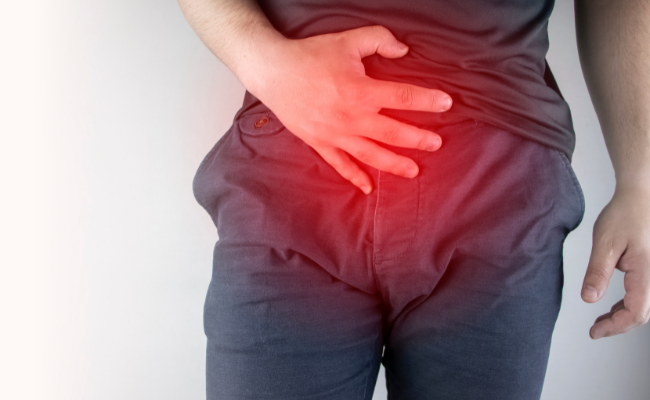How to Treat Bladder Stones?
- November 28, 2023
- No Comments

What are Bladder Stones?
Bladder stones, also called vesical calculus or bladder calculi, are crystalline formations in the bladder resulting from minerals in concentrated urine. Varying in composition and size, they can range from small particles to larger formations causing discomfort. Formed from hardened mineral clumps, they may go unnoticed or lead to intense pain, urinary issues, and bloody urine. Immediate medical attention, including a visit to the emergency room, is crucial for severe symptoms. Recognizing the need for prompt care is vital as bladder stones can cause significant discomfort and complications. Another term for these mineral formations is bladder calculi.
Why Do Bladder Stones Form?
Several factors contribute to the formation of bladder stones. One of the primary causes is concentrated urine, which occurs when there is insufficient fluid intake or an inability to completely empty the bladder during urination. Dehydration, dietary choices, and underlying health conditions can all lead to the accumulation of minerals in the urine, promoting the crystallization process.
Urinary tract infections (UTIs) also play a significant role in the development of bladder stones. In the case of struvite stones, certain bacteria associated with UTIs can produce substances that facilitate the formation of these stones. In men, an enlarged prostate can obstruct the urinary flow, leading to the stagnation of urine and the subsequent development of stones. Other contributing factors include metabolic disorders that affect mineral metabolism and conditions like gout, which result in elevated levels of uric acid in the urine.
How to Identify Bladder Stones?
Recognizing the symptoms of bladder stones is crucial for seeking timely medical intervention. The presentation of symptoms can vary depending on the size and location of the stones, as well as whether they cause a blockage. Common signs and symptoms include:
- Pain and Discomfort: Individuals with bladder stones often experience pain or discomfort in the lower abdomen. The intensity of the pain can vary from mild to severe, depending on the size and movement of the stones.
- Frequent Urination: The presence of bladder stones can lead to an increased urge to urinate. This frequent urination may be accompanied by a sense of urgency.
- Hematuria: Blood in the urine (hematuria) may occur, indicating irritation or damage to the bladder wall caused by the stones.
- Cloudy or Foul-Smelling Urine: Changes in urine color or odor can be indicative of bladder stones. The presence of minerals and bacteria in the stones can contribute to these changes.
- Difficulty Urinating: Larger stones may obstruct the flow of urine, causing difficulty in emptying the bladder. This can lead to a weak or interrupted urinary stream.
If an individual experiences any of these symptoms, it is imperative to consult with a healthcare professional for a proper diagnosis. Diagnostic tests may include imaging studies such as ultrasound, X-rays, or a computed tomography (CT) scan to visualize the stones in the bladder.
Treatment Solutions for Bladder Stones
- Fluid Intake: Adequate hydration is a fundamental aspect of preventing and managing bladder stones. Increased fluid intake helps dilute urine, reducing the concentration of minerals and minimizing the risk of crystallization.
- Medication: In some cases, medications may be prescribed to modify the pH of the urine or dissolve specific types of stones. For example, alkalinizing agents can be used to raise the pH of the urine, making it less conducive to the formation of certain stones.
- Lithotripsy: Extracorporeal shock wave lithotripsy (ESWL) is a non-invasive procedure that employs shock waves to break down bladder stones into smaller fragments. These smaller pieces are then more easily passed during urination or eliminated from the body. ESWL is particularly effective for smaller stones and is often performed on an outpatient basis.
- Surgical Removal: When stones are too large to be effectively treated with medications or lithotripsy, surgical intervention may be necessary. Transurethral cystolitholapaxy is a common surgical procedure for bladder stone removal. It involves using a cystoscope, a thin tube with a camera, to locate and remove the stones. This procedure is performed under anesthesia.
- Preventive Measures: Adopting preventive measures is crucial to reduce the risk of bladder stone recurrence. Lifestyle modifications include maintaining proper hydration by drinking an adequate amount of water throughout the day. Dietary changes may be recommended, such as reducing salt intake and avoiding foods that contribute to stone formation, such as those high in oxalates.
Managing underlying health conditions, such as urinary tract infections or metabolic disorders, is also essential. Regular follow-up with healthcare providers and compliance with prescribed medications contribute to long-term prevention.
Benefits of Treating Bladder Stones
- Pain Relief: Treatment of bladder stones alleviates the pain and discomfort associated with their presence. As stones are dissolved, fragmented, or surgically removed, individuals experience relief from the often debilitating pain in the lower abdomen.
- Prevention of Complications: Untreated bladder stones can lead to various complications, including urinary tract infections, bladder damage, and kidney problems. Timely and effective treatment helps prevent these complications, preserving the overall health of the urinary system.
- Improved Urinary Function: The removal or treatment of bladder stones allows for the restoration of normal urinary function. This results in a reduction of symptoms such as frequent urination, urgency, and difficulty in voiding, contributing to improved daily functioning.
- Enhanced Quality of Life: The resolution of bladder stone-related symptoms and the prevention of complications contribute to an improved overall quality of life. Individuals can engage in daily activities without the burden of pain and discomfort, leading to a more fulfilling and active lifestyle.
Comments (0)